« View all research
#Self Regulation
Children's Fidget Object Preferences

Fidgeting involves interacting with objects using repetitivehand movements. Before you can study its effects, you mustfirst study the objects with which people choose to fidget.We present the findings of our five-phase three-month studywith 28 children, 24 parents, and 2 teachers examining fidgetmaterial qualities and inherent interactions children gravitatetowards when fidgeting and what, if any, connections can bemade between their emotional state or activity when fidgetingand their fidget interactions/materials preferences. Our studyincluded structured interviews, observations during usage, anddesign workshops. We present novel insights concerning fidgetobject preferences, across factors including materials, inter-actions, stealth, durability and sound, which together can actas guidelines in the development of educational, experimentaland utility tangibles for children. For example, children tendto prefer a fidget item with inherent squeezing interactionswhen they are angry and clicking/pressing/tapping interactionswhen they are bored. This project was lead by Suzanne B. da Câmara and co-authored with Rakshit Agrawal and Katherine Isbister.
#Self RegulationSoft-bodied creature for enriched SEL engagement
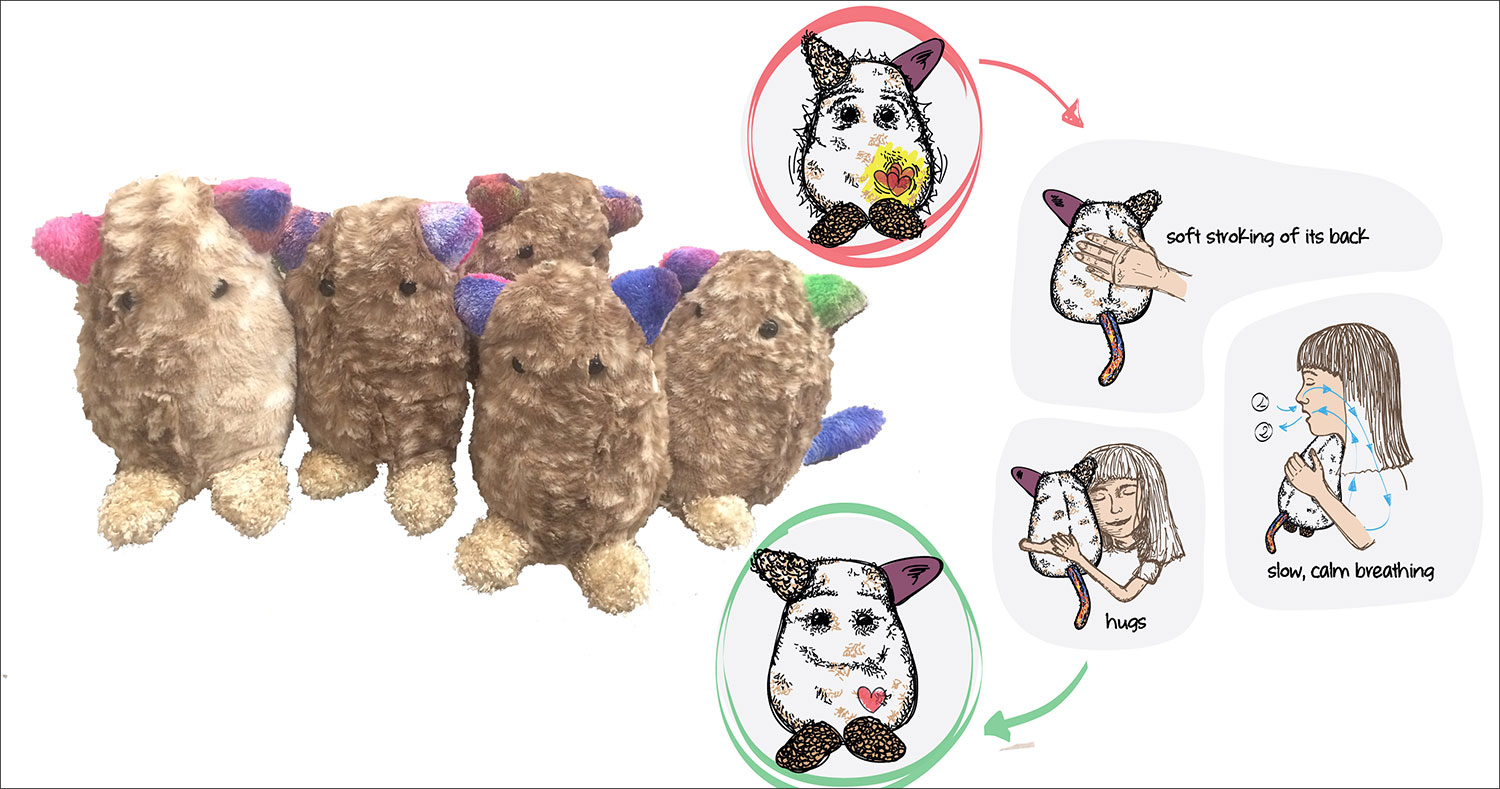
This exploration is an extension of the work started in our Smart Materials exploration and looked at designing a companion that would endear itself to a child. It was aimed at encouraging healthy self soothing in the child through vibrational feedback and has the ability to respond when it's being interacted with. In addition it's self contained on board cataloging allows for post reflection on the actions the child performed. In this Research-Through-Design process we created several iterations and focus tested, workshopped and eventually deployed them into the field with children that were actively in Social and Emotional Learning courses. This was a multiyear deployment and production of the creature involved Peter Cottrell, Alessia Cecchet, Ella Degan, and Katherine Isbister at UCSC. We partnered with UCL and CfC to deploy the creature to the children.
#Self RegulationSoft-bodied object for observing fidgeting
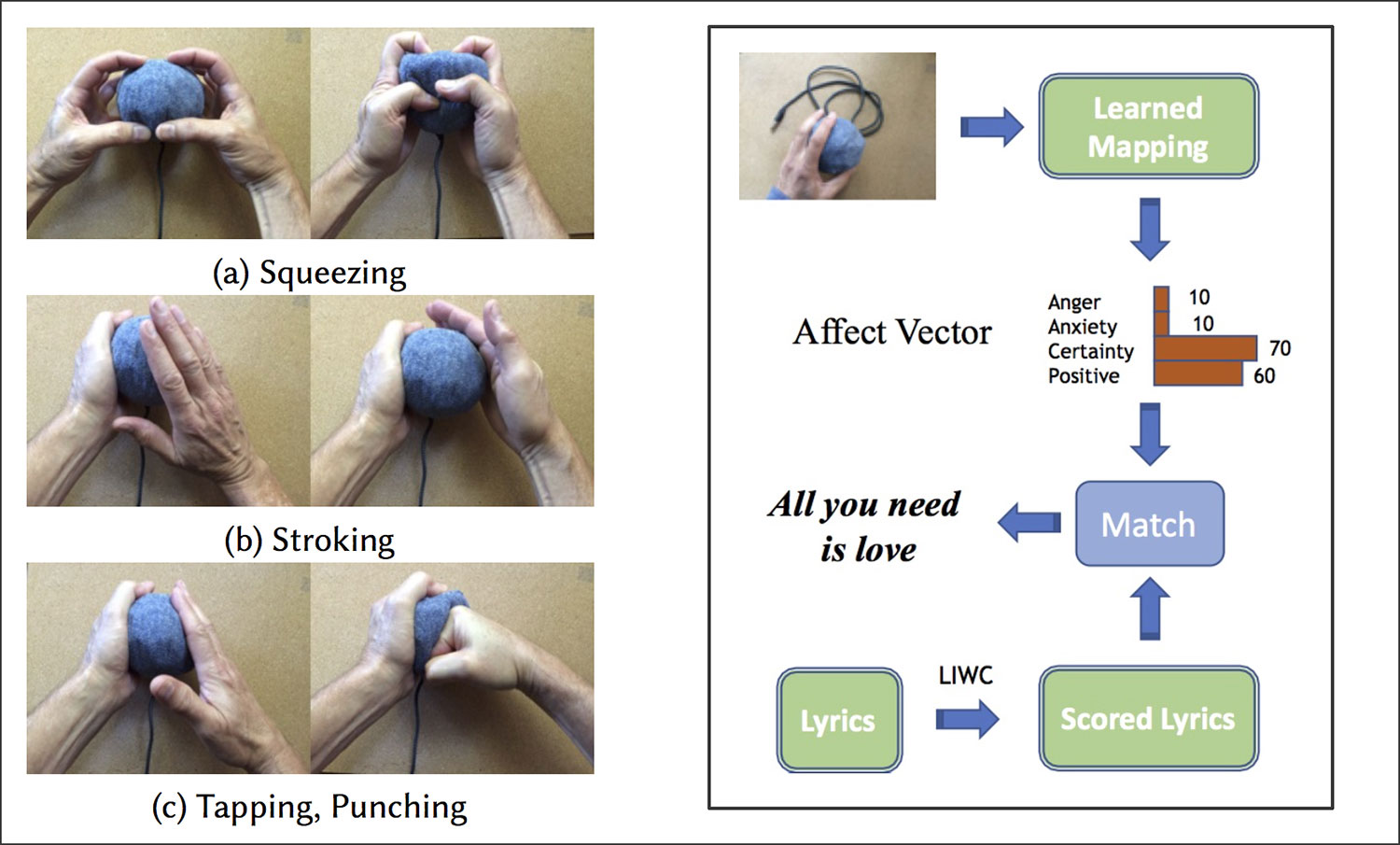
Observing fidgeting is hard when you're attempting to do so naturally, however our team took the approach of using the fidgeting object to observe the user rather than external observers interpreting behavior. In this project we developed a soft-bodied ball that has internal hardware designed to absorb user interaction through pressure, gyroscope and "clicky" buttons to allow for a wide range of fidgeter fascination. This device is being used in collaboration with Machine Learning designers who have developed translation engines from touch into affect and touch into visual feedback. This project is in flux and has several end goals to explore. It is a collaboration between Peter Cottrell, Alessia Cecchet, Ella Degan and Katherine Isbister, with help from undergraduates Vicky Feng, and Neilson Pacquing. Our external collaborators include UCSC ML Professor Daniel Shaprio and Dr. Julie B Schweitzer and Shannon Hoffman from the UC Davis MIND Institute.
#Self RegulationMaterials Exploration for Smart Fidgeting
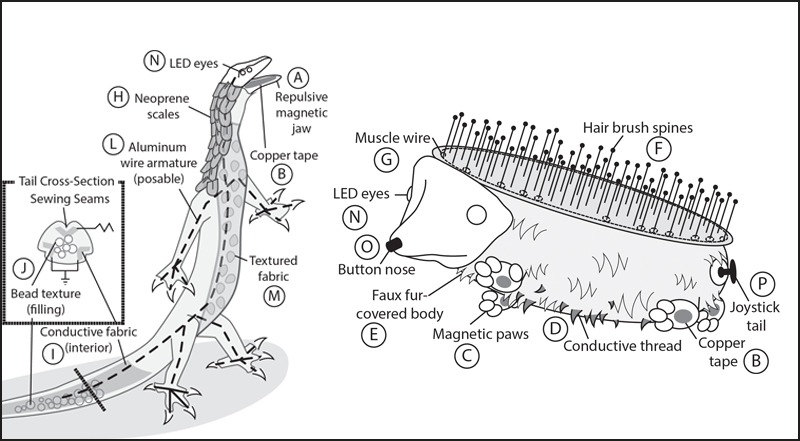
This materials exploration into how we might integrate electronics into interesting fidgeting modalities and material interfaces was derived from work published in Karlesky and Isbister (NordiCHI '16). Our team used a research through design method to prototype and explore various embedded electronics resulting in 2 exemplar devices in the shape of a dragon and a hedgehog. These prototypes were presented to a workshop of children alongside other fidgeting devices (see da Camera CHI 2016 for more information on user study). This project was developed by Peter Cottrell, April Grow and Katherine Isbister.
#Self RegulationPIV++: Evaluating a Personalizable, Inconspicuous Vibrotactile (PIV) Breathing Pacer for In-the-Moment Affect Regulation

We designed and evaluated a personalizable and inconspicuous vibrotactile breathing pacer. We developed the pacer to help people regulate their anxiety. We examined two previously unstudied questions: what is an effective vibrotactile pattern for paced breathing, and where should the tactors be placed on the body to make the pacer most effective? We designed a series of personalized vibrotactile pacing patterns, and evaluated them on three body sites, in terms of self-reported and psychophysiological measures including skin conductance (SC) and breath wave parameters. The results show that personalization plays an important role in PIV’s pattern and placement design choices and we concluded that the choice of frequency based vibration patterns and abdomen placement are appropriate for future studies. Given the prevalence and adverse impact of anxiety, there is considerable interest in using technology to regulate anxiety. Evaluating the efficacy of such technology in terms of both the average effect (the intervention success) and the heterogeneous effect (for whom and in what context the intervention was effective) is of paramount importance. In this paper, we demonstrate the efficacy of PIV, a personalized breathing pacer, in reducing anxiety in the presence of a cognitive stressor. This is the first mixed-design study of a vibrotactile affect regulation technology which accounts for individual differences and user-technology engagement in relation to the technology’s efficacy in the presence of a specific stressor. Guidelines in this paper can be applied for designing and evaluating other affect regulation technologies.
#Self RegulationHapLand: A Scalable Robust Emotion Regulation Haptic System Testbed
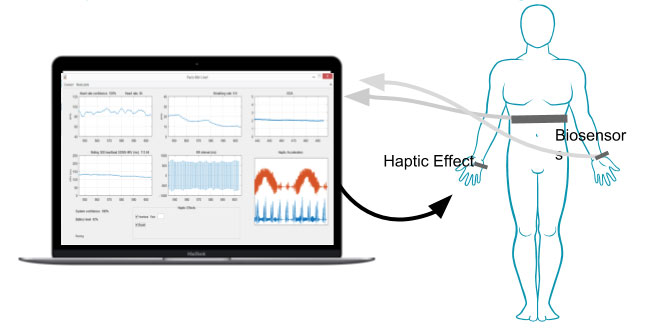
In this project, we have designed and implemented HapLand, a scalable, robust biofeedback haptic system testbed to facilitate research-based haptics-enabled wearables design for the purpose of emotion regulation.
#Self RegulationEmotion Regulation in the Wild: Introducing WEHAB
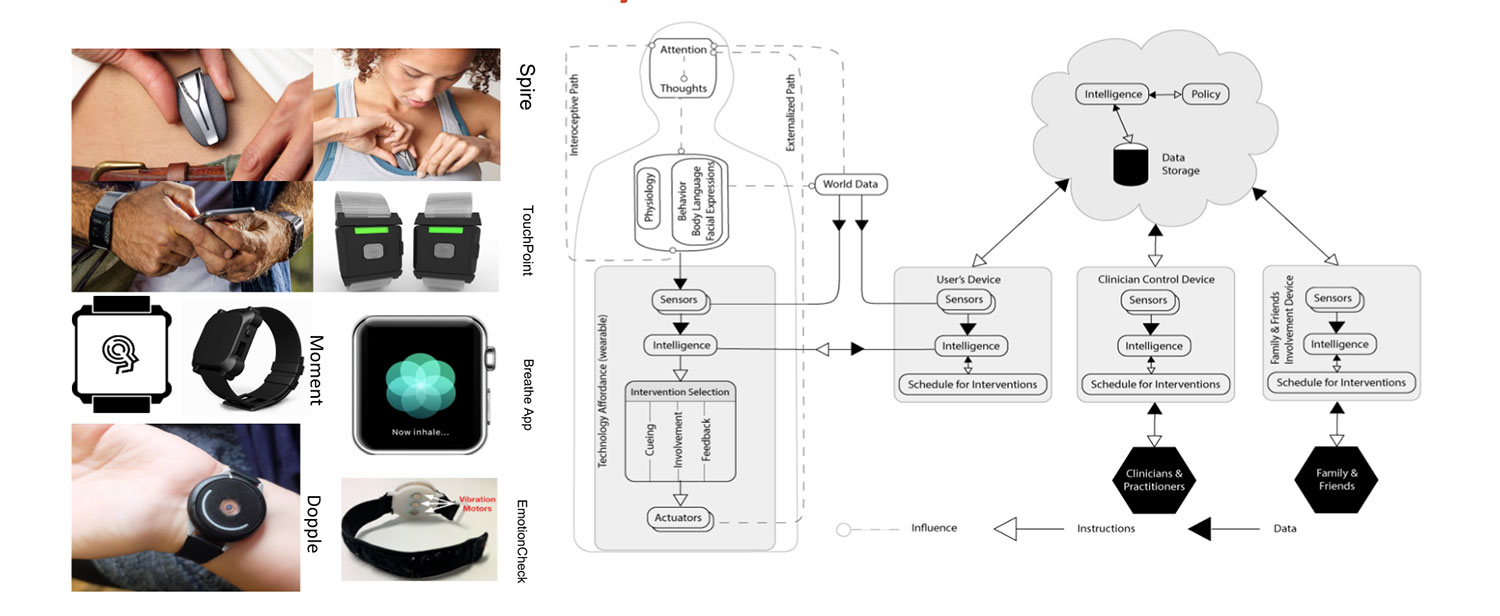
Emotion regulation in the wild (ER-in-the-wild) is an important grand challenge problem of increasing focus and is hard to approach effectively with point solutions. We provide HCI researchers and designers thinking about ER in-the-wild with an ER-in-the-wild system architecture derived from mHealth, the Emotion Regulation Process Model(PM), and a circular biofeedback model that can be used when designing an ER system.
#Self Regulation